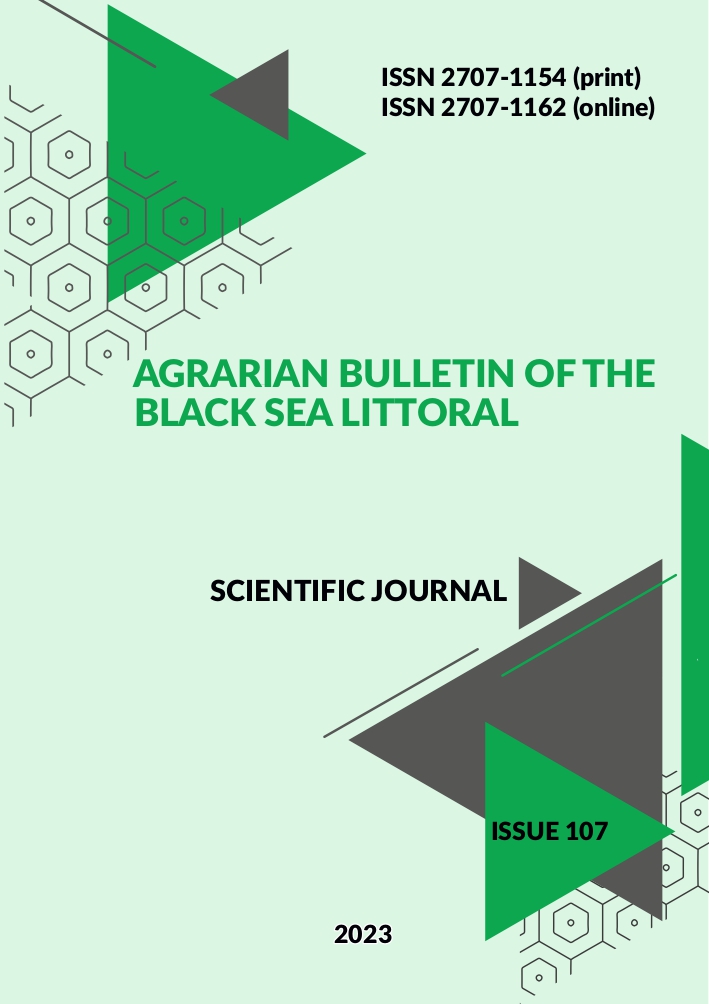MORPHOMETRIC PARAMETERS OF THE AFRICAN CLAWED FROG (XENOPUS LAEVIS)
DOI:
https://doi.org/10.37000/abbsl.2023.107.08Keywords:
amphibian, Xenopus laevis, morphometric indicatorsAbstract
African clawed frog (Xenopus laevis) belongs to the Pipidae family, a subfamily of spur frogs (Xenopus). In natural conditions. it lives in small temporary and permanent reservoirs. It is more often found in ponds with stagnant water covered with green algae. In natural conditions Xenopus laevis can tolerate significant fluctuations in water pH but the presence of metal ions is toxic.
In the aquarium keeping conditions it was noted that the body length of Xenopus laevis females is on the average 4.1 cm longer than the body length of males, which is almost 30.1%. There is also a corresponding tendency to other males body parts proportional decrease: the head length and width, front and rear limbs, eyes.
The body weight of Xenopus laevi depends on the sex and the period of reproduction, but certain features of the amphibians body weight have been revealed: the body weight of ♀ is 108-184 g (159.8 ± 4.8), and in the period of reproduction 125-196 g (168.3 ± 7.4 g); body weight ♂ 78 – 132 g (123.9 ± 5.2 g), and in the breeding period 84 – 141 g (131.2 ± 3.6 g).
The body weight of females is on average 22.47% more than that of males. During the breeding season, the weight of females increases by 8.5 g or 5.32%, and that of males by 7.3 g or 5.89%, respectively.
The Xenopus laevi amphibians has no registered developmental anomalies. This anomalies absence is directly related to Xenopus laevi amphibians aquariums in a clean environment keeping.
References
1.Аrystarkhova, E. (2018). Toksykolohichne biotestuvannya vod poverkhnevykh dzherel vodopostachannya ta pytnoyi vody na lychynkakh Xenopus laevis. Visnyk ahrarnoyi nauky, 96(2), 60-63.
Behler, J. L., & King, F. W. (2008). National Audubon Society Field Guide to Reptiles and Amphibians: North America. Knopf.
Cannatella, D. C., De Sá, R. O. (1993). Xenopus laevis as a model organism. Systematic Biology, 42(4), 476-507.
Ihnatenko, I. A. (2010). Batrakhoherpetolohiya: posibnyk dlya studentiv dennoyi ta zaochnoyi formy navchannya napryamu pidhotovky–Biolohiya.
Іhnatenko, I. A. (2009). Ekolohiya tvaryn: navch. posib.
Kramarenko, S. S. (2021). Prykladna zoolohiya.
Lynch, A. J., Cooke, S. J., Arthington, A. H., Baigun, C., Bossenbroek, L., Dickens, C., ... & Jähnig, S. C. (2023). People need freshwater biodiversity. Wiley Interdisciplinary Reviews: Water, 1633.
Maddin HC, Eckhart L, Jaeger K, Russell AP, Ghannadan M (2009). "The anatomy and development of the claws of Xenopus laevis (Lissamphibia: Anura) reveal alternate pathways of structural evolution in the integument of tetrapods". Journal of Anatomy. 214 (4), 607–619.


